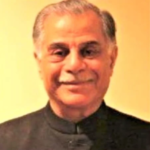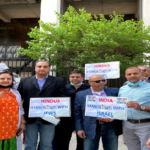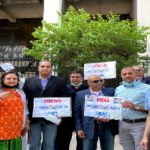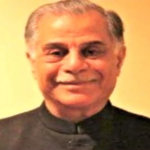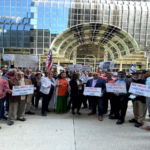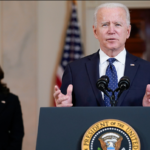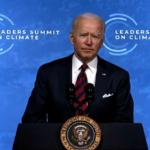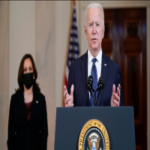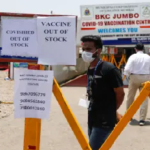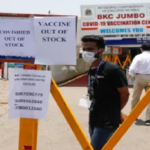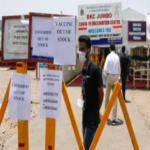A dream can change one’s life. But with Camellia Panjabi, her dream was to prove to the world that Indian cuisine is as sophisticated and as advanced as French, Japanese, Thai or any other. “We should be proud,” she says, “to be Indian and to be inheritors of such a rich legacy.”
Camellia Panjabi is one of India’s leading culinary personalities, known for her innovative contribution to popularizing Indian regional cuisines within India and London, through trendsetting Indian restaurants. She is also known for having brought the street foods of India from the pavements into plush restaurants both in India and abroad.
It was her passion for learning and popularizing the authentic Indian food that made her dedicate her entire life, sharing of the broad spectrum of Indian cuisine to the rest of the world. In researching the project Camellia was aware of- and succeeded against- certain practical challenges: India was a country with around 1.2 billion people, 14 different languages, 29 States, 7 Union Territories, not to mention various cultures – thereby demonstrating contrasts at least as stark as those found between countries across a varied continent like Europe.

Little surprise then, to find that a national identity of cuisine was not something originally found in India. Camellia found that recipes were the closely guarded secrets of families across the country. To expand her knowledge of regional Indian cuisine, she embarked upon a project that sought to seek information from those families, private chefs and home cooks, a corollary of which was her publication ‘The 50 Great Curries of India’, which has sold 1.5 million copies, and is probably the best selling cookbook on Indian cuisine outside of India.
In the 1960s when Camellia came down from Cambridge, UK and applied for and was able to join the Tata Administrative Service, which was, in those days was an entirely male bastion. After a stint with Tata Oil Mills, Camellia ended up at Indian Hotels, then no more than a company that managed Bombay’s Taj, which was in a state of decline. Camellia has been credited with innovative ideas that changed the Taj and its success story has come to be admired. From just one Hotel, the Taj group in a span of few years, opened several top notch hotels in major cities across India. The marketing campaigns she launched positioned them as the country’s leading luxury chain.
Until Camellia came along, Indian hotels were not known for their food. It was the Taj that changed all that. Shamiana, the coffee shop at the Bombay hotel, was the first to put things like pao bhaji on the menu and the first 5 star posh hotel in India to offer idlis and dosas on the breakfast menu. When Machan opened in Delhi in 1978, the prices were kept low so that younger people could sample the hotel’s unusual fare – one reason why the old Machan still evokes so much affection in people of my generation.
Camellia was also instrumental in introducing the newly discovered Sichuan Chinese cuisine into India, with The Golden Dragon and The House of Ming which opened in Delhi in 1978. Both changed the way in which Indians looked at Chinese food, and swept India leading to the creation of Chindian food or Sichuan / Ludhianvi cuisine, as India’s leading food critic calls it. Her love of Far Eastern food which led to the opening of Paradise Island restaurant in the Eighties at Taj West End hotel and introduced Indians to the cuisines of Thailand.

Another contribution that Camellia has been credited with is the Taj’s success in persuading north Indians that there was more to south Indian food than idlis and sambar. It was Camellia who pushed the Taj to explore the cooking of India’s west coast: Goa, Mangalore and Kerala and set up the Karavalli restaurant at Taj Gateway Hotel in Bangalore. It was her love for the peppery hotness of Chettinad food that popularized the cuisine first within Chennai and then it spread all over India and the world. Taj chefs were dispatched to private homes in Karai Kudi district of Tamil Nadu to learn how to cook the best dishes and to learn ancient family recipes. Then she launched ‘the Raintree’, the first Chettinad restaurant in India at the Taj Connemara hotel in Chennai. But till the Taj took the plunge in the 1980s, the food of the south remained restricted to the south.
In 1983 Camellia opened the Bombay Brasserie restaurant in London, which introduced regional Indian cooking to the UK for the first time and changed the way Indian cuisine was perceived in London.
Panjabi’s real passion though is a variation on Indian street food. “Street sellers depend on word of mouth. So they have to make it taste the best,” she says. “My mother who was a doctor, did everything in her power to stop us eating it with reasons of hygiene, but with children there is always a way. That love of the taste of street food stays with us through to adulthood.”
After leaving The Taj, in 2001 Camellia Panjabi joined her family’s restaurant company Masala World in London, which owns Chutney Mary in Chelsea, Veeraswamy, the UK’s oldest Indian restaurant and Masala Zone throughout London. Amaya, their latest venture, winning several awards. In 1989, Namita Panjabi and Ranjit Mathrani formed Chelsea Plaza Restaurants which was later renamed Masala World. The company was formed to create top end restaurant Chutney Mary as an outlet for fine Indian food. The restaurant immediately won accolades and audiences in London. They then bought the ailing Veeraswamy, and turned it around to have a new life as London’s best Indian restaurant, given the award by London’s Time Out magazine.
Camellia Panjabi joined the group as a director in 2001 and together the team of 3 set about the project of Amaya restaurant, which after opening in October 2004 gained a nomination by 7 top food writers of UK as ‘London’s Best Restaurant’ across all cuisines. This was the first city in the world outside India where an Indian restaurant was judged the Best Restaurant. Amaya was also awarded a Michelin star in 2006.
In 2001 they created a new Masala Zone concept and launched it in the colorful Soho district, providing a fresh new approach with Indian street food and the Thali way of eating, including non-vegetarian thalis. The décor of the restaurants is full of spirit using tribal and popular folk art. Now there is a collection of seven restaurants across London.
In 2012, the company as a whole was renamed MW Eat. Most recently, MW Eat moved the iconic restaurant Chutney Mary to beautiful upscale premises on St James’ Street, London and opening Masala Grill on its former site.
Veeraswamy, UK’s oldest Indian restaurant, has been the rendezvous of rich, famous, fashionable lovers of Indian food since its inception in 1926. It celebrates 90 years in 2016 and is credited with being the oldest Indian restaurant in the world. The luxurious, chic, and exotic décor evokes Maharaja’s palaces of the 1920s. A menu of top flight classical dishes from throughout India is combined with more contemporary creations. National Geographic, the highly respected travel magazine, has ranked it as one of the 10 Best Destination Restaurants in the World. No other UK restaurant is in the top 10. Voted “Indian Restaurant of the Year” by them.
Veeraswamy is one of the leading fine dining restaurants serving Indian food in the world today.
For more information go to: http://www.fineindianrestaurants.com/







